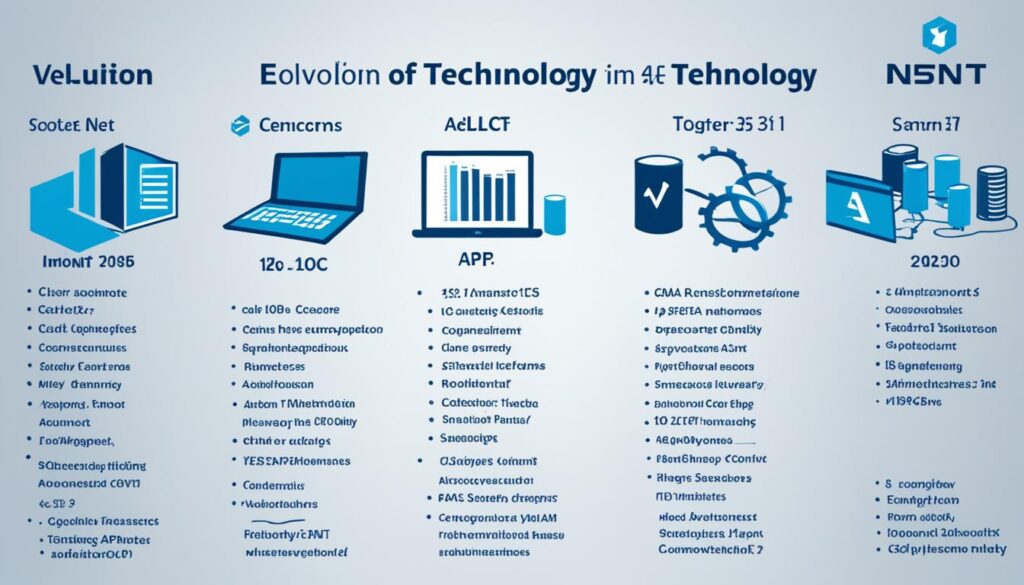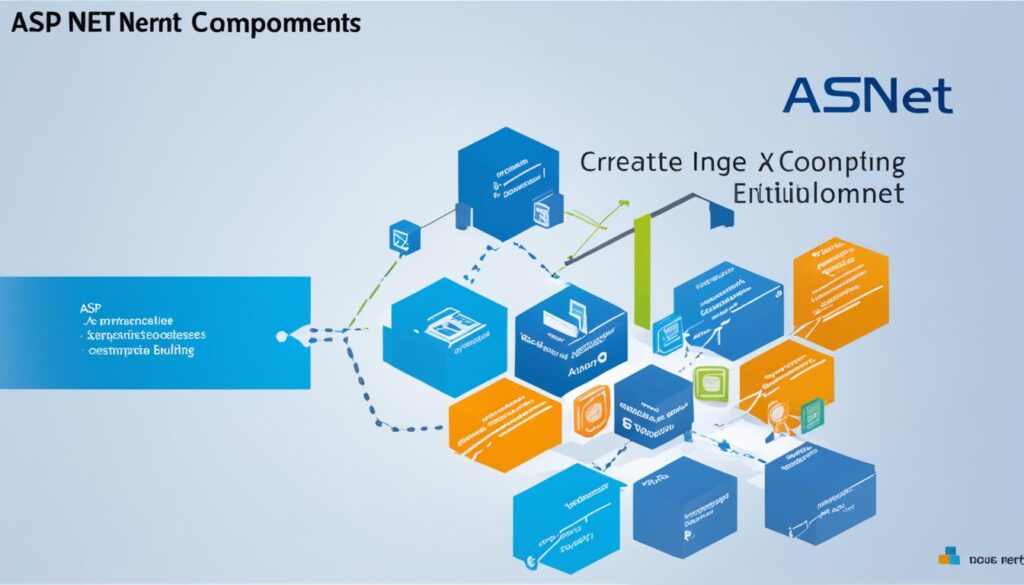ASP.NET is a development framework that enables programmers to build dynamic and powerful applications for the Internet. Developed by Microsoft , and based on the powerful .NET infrastructure, ASP.NET provides advanced tools for writing secure and efficient code.
Key points
- ASP.NET helps develop dynamic and well-designed web applications .
- The combination of ASP.NET and .NET languages provides performance and security benefits.
- Microsoft continues to update and expand the capabilities of ASP.NET.
- ASP.NET can be used on a variety of development platforms and in different environments.
- Knowledge of ASP.NET is in demand in the job market in Israel and around the world.
History and development of ASP.NET
The history of ASP.NET begins with the launch of the platform in the early 21st century by Microsoft , as part of the .NET technology revolution. The technology significantly innovated the world of web development , providing new and advanced tools for developers.
The transition from classic ASP to ASP.NET
The transition from classic ASP to ASP.NET is one of the major changes in managing websites and web applications. ASP.NET led to improvements in performance and security, and offered broader XML support.
Versions and updates over the years
An important part of ASP.NET’s history are the various versions that have been developed and updated over the years. From ASP.NET 2.0 to 4.0, each version has brought with it new and advanced capabilities.
Microsoft’s contribution to the development world
Microsoft , the software giant, has continued to contribute to the field of web development by releasing new versions of ASP.NET. Each released version has contributed to the developer community by offering advanced tools and technologies for creating web applications that are more efficient and easier to develop.
| year | version | Key features |
|---|---|---|
| 2002 | ASP.NET 1.0 | Built-in XML support, advanced development tools |
| 2005 | ASP.NET 2.0 | New controls, improved user management |
| 2008 | ASP.NET 3.5 | LINQ support, security updates |
| 2010 | ASP.NET 4.0 | Performance improvements, updated access to data |

What is ASP.NET and how is it different from other development languages?
In the vibrant and evolving world of website and application development, ASP.NET stands out due to significant advantages that carry over to all development languages. It is a powerful platform that is distinguished by its ability to isolate logic from infrastructure, which allows developers to focus more on business logic than on the platform’s interfaces.
In the development language comparison , ASP.NET stands on a par with Java, Python, and C#, each offering different advantages. But one of the most notable features of ASP.NET is its platform agnosticity – code written in this technology can run on any server that supports the CLR (Common Language Runtime), which enables dynamic and modular development .
| year | Event |
|---|---|
| 1991 | Java launches and the labs at CERN develop the first ASP.NET CORE |
| 1995 | Release of JavaScript and PHP, two of the most common languages for web development |
| 2000 | Official launch of .NET technology |
| 2002 | Microsoft launches the ASP.NET library |
| 2014 | Microsoft releases .NET CORE |
In contrast, PHP is known for its usefulness in developing dynamic websites using MySQL and is seen as an effective solution for content management systems. The difference between ASP.NET and other languages is reflected in its support for a wide range of programming languages and easy integration with databases and other services.
One of the advantages of ASP.NET is its seamless integration with other Microsoft technologies, allowing you to create complex applications with relatively little work. For example, you can read more about improving website performance here .

Ultimately, the choice of development platform depends on the project’s requirements, but ASP.NET has an important place in the global technology arena thanks to all of the above.
The main ASP.NET components
Microsoft’s ASP.NET framework offers a rich and modular environment for developing web applications, with a variety of software components that enable effective and efficient application development. Key components include Web Forms , MVC , and Web API , each of which provides different technological solutions for developing modern applications.
Web Forms – Dynamic Application Development
Web Forms , one of the oldest components of ASP.NET, enables rapid and efficient development of dynamic applications using a powerful graphical interface. It is a particularly useful tool for programmers looking to create complex user interactions using forms and rich graphical elements.
MVC – Model-View-Controller
The MVC (Model-View-Controller) component in ASP.NET provides a clean architecture for development, with a clear separation between the data (Model), the user interface (View), and the application logic (Controller). Such a design simplifies application maintenance and upgrades, while maintaining flexibility in development and integration between the different layers.
Web API – Creating RESTful services
Web API in ASP.NET encourages the development of RESTful services, which are endpoints for communicating with other applications over HTTP. Using Web API allows developers to create flexible and secure APIs that support multi-platform clients – from desktop applications to mobile widgets.

Understanding project structure in ASP.NET
Understanding the structure of an ASP.NET project is an important component of any software development based on leading Microsoft technology. Let’s dive into the interesting and complex world of project structure and dependency management.
Introduction to the project mix
An ASP.NET project usually includes a variety of files organized into directories and folders, each of which plays a specific role. Web pages based on .aspx technology and server-side code with the .cs extension are just part of this complex structure. The ability to understand and manage the structure in an ASP.NET project ensures efficient development and optimal results when working with the platform.
Managing dependencies and libraries
Dependency management in ASP.NET projects is primarily done through the NuGet package management mechanism, which allows developers to add, update, and manage third-party libraries easily and securely. This greatly optimizes and improves the development process, as developers can focus on writing code rather than dealing with the technical intricacies of library management.
For more information on related topics, such as creating graphical user interfaces in WPF or developing rich applications in Silverlight, you can read professional documentation and guides that describe using ASP.NET in cloud-based projects and data storage.

Visual Studio 2010 SP1 is the go-to development tool for ASP.NET developers, supporting multiple operating systems and a variety of architectures. This support comes with specific hardware requirements designed to ensure a smooth and efficient development experience, including a 1.6 GHz processor and at least 1,024 MB of RAM.
The capabilities included in this version of Visual Studio enable the development of complex Silverlight applications, with built-in support for Silverlight 4 and tools for fast and efficient debugging. Improved support for the Azure platform has also been added, with information and guidance provided to developers to compare different services within the cloud, and basic knowledge of managing databases in Azure is considered essential.
Ultimately, Visual Studio 2010 SP1 is not just another development framework , but a rich set of tools for building powerful, innovative web applications. The tools it offers, along with detailed tutorials and modules on Azure hosting, data storage, and security, give developers the knowledge and ability to optimize an application for the cloud, from the production platform to its deployment in the field.
FAQ
What is ASP.NET?
ASP.NET is a powerful development framework from Microsoft, used to create dynamic applications and websites.
What are the changes when moving from classic ASP to ASP.NET?
The move to ASP.NET brought improvements in performance, security, and expanded XML support.
How have new versions of ASP.NET contributed to the development world?
Each new version that Microsoft launched had advanced capabilities and features that contributed to a better development experience.
What are the advantages of ASP.NET over other development languages?
ASP.NET leads in the ability to develop platform-agnostically, support for a variety of programming languages, and broad integration with various services.
What are the main ASP.NET components?
ASP.NET components include Web Forms , MVC , and Web API for creating dynamic web applications and services.
How can you understand the structure of a project in ASP.NET?
A project structure in ASP.NET uses MS Build and is built from various code files that are organized in a directory and folder structure.
What is the role of dependency management in ASP.NET development?
Managing dependencies using NuGet allows developers to add and update third-party libraries in their projects.
What are the benefits of using Web Forms?
Web Forms enables rapid development and creation of advanced graphical interfaces for dynamic applications.
What is MVC in the context of ASP.NET?
MVC is a development pattern that separates application logic, interface, and model data, making application maintenance easier.
How does Web API contribute to the development of RESTful services?
Web API was developed to support the creation of services that are compatible with modern RESTful communication protocols.




